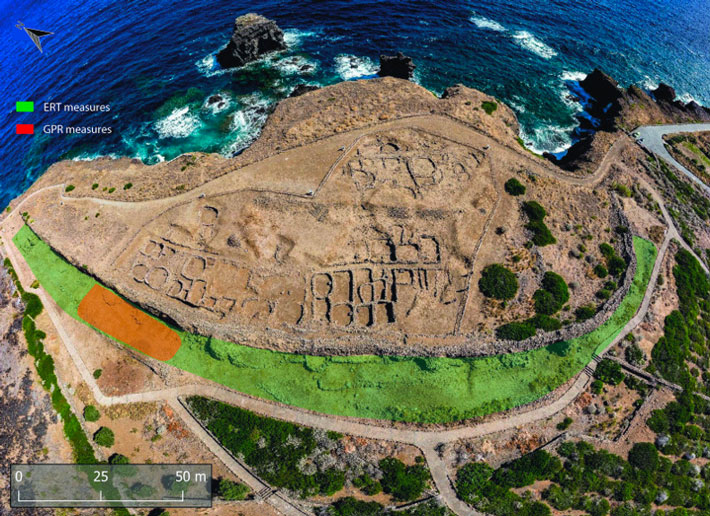 USTICA, ITALY—Researchers from Italy’s National Institute of Geophysics and Volcanology (INGV) have found a fortification system beneath Villaggio dei Faraglioni, a village site on an island north of Sicily inhabited between 1400 and 1200 B.C., according to a Live Science report. Employing ground-penetrating radar and electrical tomography, the scientists found remnants of a buried wall measuring about 820 feet long and 13 to 16 feet tall. “Thanks to [the instruments], it was possible to locate accurately and in a totally non-invasive way the deep foundations of the [structure] as long as the wall, which performed the functions of the first defensive barrier,” said applied geophysicist Vincenzo Sapia of the INGV. The village’s Bronze Age defenses were clearly more complex than previously thought, explained Franco Foresta Martin of the Earth Science Museum Laboratory of Ustica. Read the original scholarly article about this research in Journal of Applied Geophysics. To read about other archaeological research in Sicily, go to "Sicily's Lost Theater."
USTICA, ITALY—Researchers from Italy’s National Institute of Geophysics and Volcanology (INGV) have found a fortification system beneath Villaggio dei Faraglioni, a village site on an island north of Sicily inhabited between 1400 and 1200 B.C., according to a Live Science report. Employing ground-penetrating radar and electrical tomography, the scientists found remnants of a buried wall measuring about 820 feet long and 13 to 16 feet tall. “Thanks to [the instruments], it was possible to locate accurately and in a totally non-invasive way the deep foundations of the [structure] as long as the wall, which performed the functions of the first defensive barrier,” said applied geophysicist Vincenzo Sapia of the INGV. The village’s Bronze Age defenses were clearly more complex than previously thought, explained Franco Foresta Martin of the Earth Science Museum Laboratory of Ustica. Read the original scholarly article about this research in Journal of Applied Geophysics. To read about other archaeological research in Sicily, go to "Sicily's Lost Theater."
Fortification Wall Found at Bronze Age Village Site in Italy
